Making the unseen seen
Artificial intelligence provides real-time visual insights
into mining operations
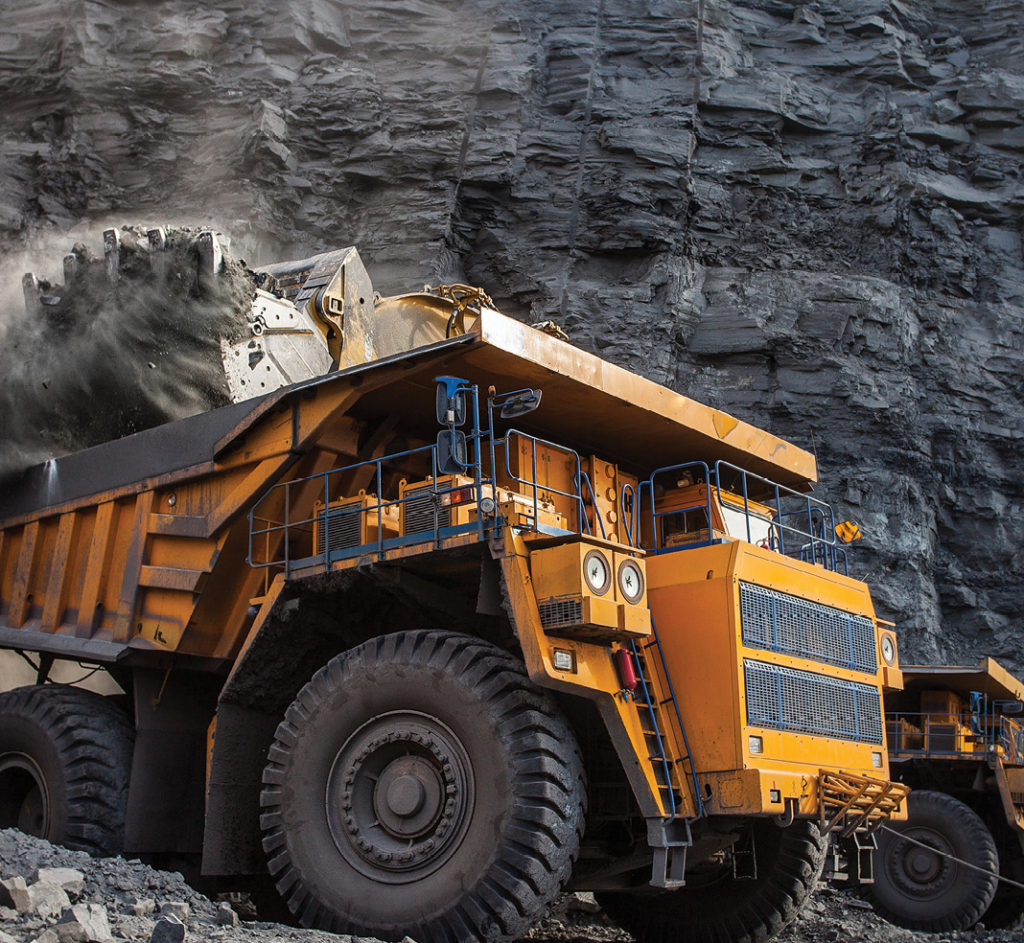
For the mining industry, continuous innovation is required to optimize production, lower costs, and improve the safety of workers. Artificial intelligence (AI) and machine learning (ML) technologies can help mining companies adapt to a changing landscape of unpredictable events. AI has many benefits for the industry; however, it is still very new and there is a lot of work that needs to be done while applying it, which requires a robust foundation of planning, research, communication, and change management.
In a previous article last year, we discussed how AI-enabled data analysis can assist in more efficient extraction of mineral deposits while minimizing environmental damage. AI is increasingly being used to map more exploration data and streamline the process of discovery.
Additionally, AI-enabled mining innovation for other aspects of the mining supply chain continues to move forward. Eventually, AI will revolutionize the mining industry.
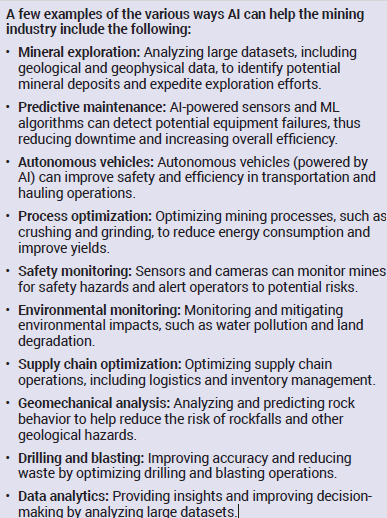
Moreover, extraction innovation is focusing on remote tunnel monitoring systems which allow monitoring of mining tunnel integrity. Remote monitoring system technology uses AI to determine the viability of digging the tunnels deeper to access additional mineral deposits. These technologies can help propel mining into the future by maximizing both the extraction of resources and safety in old and new mines.
During PDAC 2024, I caught up with Marty Beard, co-founder and CEO, and Justin Rich, director of cloud engineering and IT at alwaysAI, to discuss how mines can minimize downtime, maximize productivity, and enhance safety to improve top and bottom lines using computer vision to provide a detailed view of the entire mining lifecycle. This article is based on the conversation that took place during PDAC 2024.
The alwaysAI platform
The company employs computer vision for practical AI solutions across various sectors, from mining and manufacturing to retail and beyond, enhancing operational efficiencies while addressing privacy concerns.

The software (computer vision platform) is an extraordinary end-to-end vision AI platform, which means that they offer a comprehensive set of tools ― like advanced APIs, user-friendly dataset and model management, and convenient remote deployment ― that can eliminate the complexity of computer vision without sacrificing functionality, thus allowing companies to build computer vision applications, and there is a lot involved in that process. So, businesses can easily extract the data they need from existing cameras in real-time. The platform provides an end-to-end capability to build computer vision apps, run those apps 24/7 out in the real world, and then get all that data that people need to help them make better business decisions.
Computer vision enables existing cameras to quickly identify and interpret objects in the physical world allowing the real-time monitoring of everything happening in the mine, thus making more sustainable, safe, and profitable mining possible using practical artificial intelligence (AI) solutions.
A game-changer for the computer vision industry
During the last quarter of 2023, alwaysAI announced the release of enhanced machine learning operations (MLOps) features to its comprehensive computer vision platform. These integrated capabilities solidify alwaysAI as a premier MLOps computer vision provider with a suite of powerful features and tools to streamline the entire computer vision lifecycle.
The release also complements alwaysAI’s existing Dataset Management and Remote Deployment features, making it easier for developers to create, deploy, and manage enterprise-grade computer vision models and applications.
“We are always enhancing our tools and functionality to provide practical AI solutions that can dramatically streamline operations and drive more revenue,” says Marty Beard. “These advanced model evaluation and management features are the latest upgrades to our comprehensive, end-to-end computer vision platform,” he added.
Key features of alwaysAI’s MLOps include the following:
> Enhanced user interface to streamline the model configuration process.
> Multiple GPU options for greater control of model training speeds.
> Forecasted model training duration based on your specific parameters for ultimate flexibility.
> Real-time session performance including metrics such as mAp, recall, and validation loss.
> Model evaluation with alwaysAI’s exclusive modelIQ tool that measures precision, recall, and F1 score, to facilitate successful model refinement.
The alwaysAI platform also features a comprehensive analytics dashboard to easily view operational insights and receive immediate alerts about potential issues or concerns. For mining operators, this could include PPE usage, movement in restricted zones, machine downtime, as well as precise data about the number of bucket loads and dumps.
Various ways for alwaysAI to help the mining industry
Computer vision provides a detailed view of the entire mining lifecycle to minimize downtime, maximize productivity, and enhance safety to improve top and bottom lines. Computer vision enables existing cameras to quickly identify and interpret objects in the physical world allowing miners to monitor everything happening in the mine in real-time. More sustainable, safe, and profitable mining is made possible with Vision AI.
“Vision AI can help in every critical mining process from extraction to processing, inventory management and transportation, and delivery. AI technology like alwaysAI Smart Mining solutions enable operators to quickly deploy computer vision applications onto cameras to accurately measure and count ore extraction, monitor cage and large machine utilization, detect PPE, and address a wide variety of other applications that will have a dramatic impact on profitability,” said Marty Beard.
When asked about examples of how the alwaysAI can help solve different problems in mining, Marty and Justin presented the following examples of problems and solutions offeredby the computer vision platform:
1. Collar and cage analytics
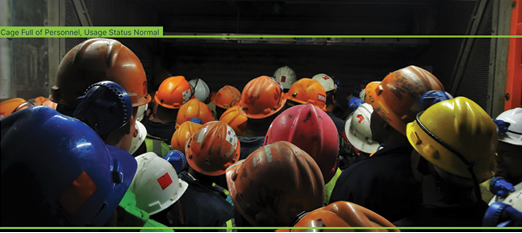
Problem: Lack of visibility in mines often leads to unplanned downtime and delays that can cost thousands of dollars a day.
Solution: Monitoring and tracking all activities, including people, materials, and equipment in collar and cage feature with real-time visual data to improve efficiency and maximize tonnage production.
2. Muck car and bucket counting
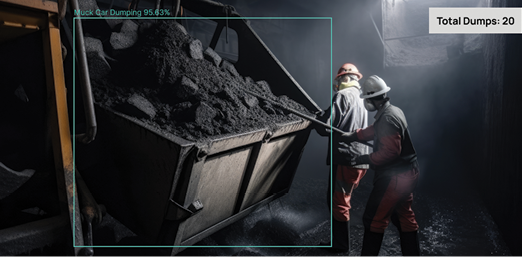
Problem: Inaccurate, outdated, or incomplete data about critical muck car and muck bucket activity makes improving processes difficult.
Solution: Use the feature for monitoring and tracking critical muck bucket and muck car activities to ensure debris is cleared efficiently to streamline processes and better manage resources.
3. Maximizing safety; PPE detection
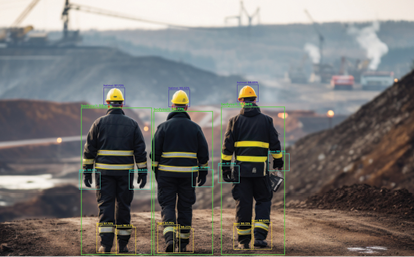
Problem: Because of the inherent dangers in mining operations, minimizing safety risks is essential. However, without visual insights into operations, injuries and accidents are inevitable.
Solution: Identify and track PPE usage including head, eye, ear, foot, and hand protection, and visibility apparel to ensure safety compliance, limit injuries and costly infractions, and prevent site downtime.
4. Labour productivity
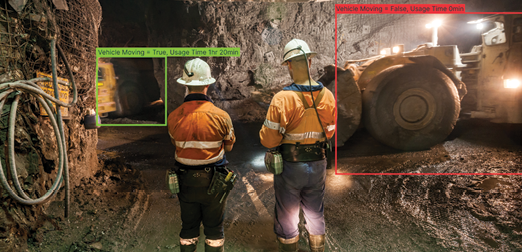
Problem: Mining requires hundreds of workers in small spaces that are challenging to monitor, thus making shift variances difficult to reconcile.
Solution: Real-time visual data about movement and dwell time throughout the mine will help to better manage human resources and maximize consistent productivity. For worker privacy, all data can be blurred and anonymized.
The future of AI in mining
“I think it is going to have a very powerful impact on improving productivity, safety, and the environment. So, it is going to become best practice. I think right now it is very early to start seeing that potential impact,” said Beard. He added, “I think companies like alwaysAI are starting to make the technology accessible. And once that happens and people see the actual impact of this technology, it will automatically become a best practice.”
“We are currently more focused on the operational part, but there are several companies that are using big data and starting to use AI to advance the exploration and make it a more efficient process. Ultimately, AI is perfectly positioned to help get more productivity out of the existing assets,” Marty Beard concluded.
Comments